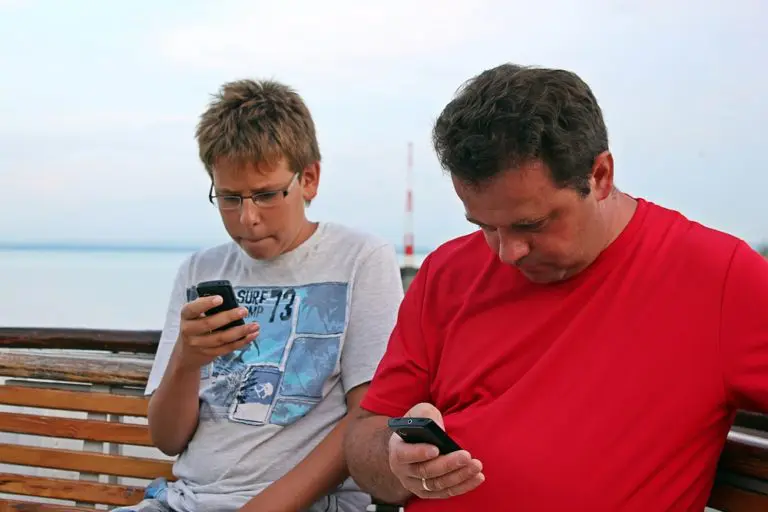Everything You Need to Know about E-Safety

Whether we like it or not, technology has become an essential part of our lives, especially for the younger generation. In contrast with the older generations who may not know how touchscreens work, today’s generation presumes that everything will work with just a single swipe. While technology can be a good thing, it can be especially changing for parents, especially when keeping the kids safe while using the web.
E-safety refers to the process of protecting younger users as they navigate the World Wide Web. It aims to protect the kids from potentially harmful content from websites or apps, such as cyberbullying, pornography, and grooming.
What is E-Safety
Many people may have heard about E-safety, but only a few actually know what it means. E-safety is a set of guidelines to help people stay safe when using the Internet. It can also refer to the safe use of technologies. The manner in which technology is evolving these days has made it difficult to determine what to include when it comes to Internet safety.
Teachers play a crucial role in inspiring young students and shaping their futures in a school setting. But they are also responsible for safeguarding the children’s well-being, not only in the classroom but in an online environment. Online abuse can come in many forms, including cyberbullying, grooming, pornography, sexual exploitation, and emotional abuse. Thus, teachers should consider taking up courses on Safeguarding and E-safety.
Some people think that e-safety is the responsibility of the school’s IT department. But now that the world is digitally dependent, teachers should also be knowledgeable about e-safety and ensure that their students remain safe while using the Internet. They should also be aware of the dangers of the Internet before teaching kids how to act responsibly online.
According to research, 7 in 10 young people have experienced some form of cyberbullying. This figure has dramatically increased over the recent years due to the increasing usage of social media and the ease of access to the Internet. The advent of the Internet has posed more “stranger danger” than ever before, which means awareness is the key to keeping the kids protected online, and this should start through e-safety training courses, which can be completed itself online.
More recently, teachers, parents, and childcare professionals have called the attention of tech and social media companies, asking them to improve their platforms. The publicity has attained some success, as Facebook announced its plans to appoint an independent oversight committee to decide how it will monitor the network and which posts are in violation of its safety standards.
Why Is E-Safety Important
The Internet can be a fun and informative place for kids to learn if used well. However, utmost caution is needed because the Internet can also be dangerous for younger users. It’s a place where fraud could take place at any moment. Many people would pretend to be someone they are not online to trick people, and children are the most vulnerable. In some cases, children could stumble upon something not appropriate. It is for this reason that E-safety is very important.
These days, most school-age children are fond of browsing videos online, playing video games, and connecting with friends. Most of the time, the kids would use the Internet for online school and homework. They have easy access to computers, tablets, mobile phones, and other Internet-connected devices. Since school-age children are becoming independent online and would sometimes insist on going online unsupervised, they are more vulnerable to online safety risks. The risk is even higher if your child would use the Internet to interact with strangers, such as through social media or network games.
Therefore, both teachers and parents must take some practical E-safety precautions to protect the children from potentially dangerous or inappropriate content and activities. By knowing about E-safety, your child can get the most out of their online experience and use the Internet as an effective tool for learning and exploring.
Tips on Keeping Children Safe
As parents or teachers, there are many things you can do to keep kids safe while using the Internet. First, try to be involved in your children’s online life. Talk to them about Internet safety in the same way you would discuss how they can stay safe in real life. Watch out for any changes in your child’s mood and behavior while using the Internet. Any change in the child’s behavior could indicate that something wrong may have happened in their online lives. Perhaps, they have encountered harassment, bullying, or intimidation. Let the children know that they can always come to you if they encounter something bad online.
We should also be good role models to our kids. It’s our responsibility to advise the kids about staying safe on the Internet and teach them how to use technology and social media appropriately. But if we don’t practice what we preach, we cannot expect them to follow our advice. When it comes to social media and Internet use, adults should be role models to kids. Teachers and parents must lead by example. They should lead by example and model good practices for the kids, especially when it comes to the appropriate use of the Internet.
Parents should ensure that the privacy settings of their kids’ devices are enabled to give them more protection from the dangers of the Internet. They should also consider using security programs and tools, such as firewalls, anti-spyware, etc.
Adults must also take time to educate kids about new apps and games. There’s always a certain degree of worry whenever new apps appear online, such as Snapchat and Tik-tok. While these apps can be fun to use, they could be used to bully, groom, or harass kids. Therefore, parents should stay updated with the latest apps and websites and ensure that their kids are safe when using these. If possible, parents should have the password of the apps and devices, so you will be notified whenever they install a new app on their devices. Also, be watchful of multiple accounts that are usually set up to avoid parental monitoring. Take time to get to know who your kids are interacting with online. Ask questions about them in the same way you would ask them about their friends and classmates.









